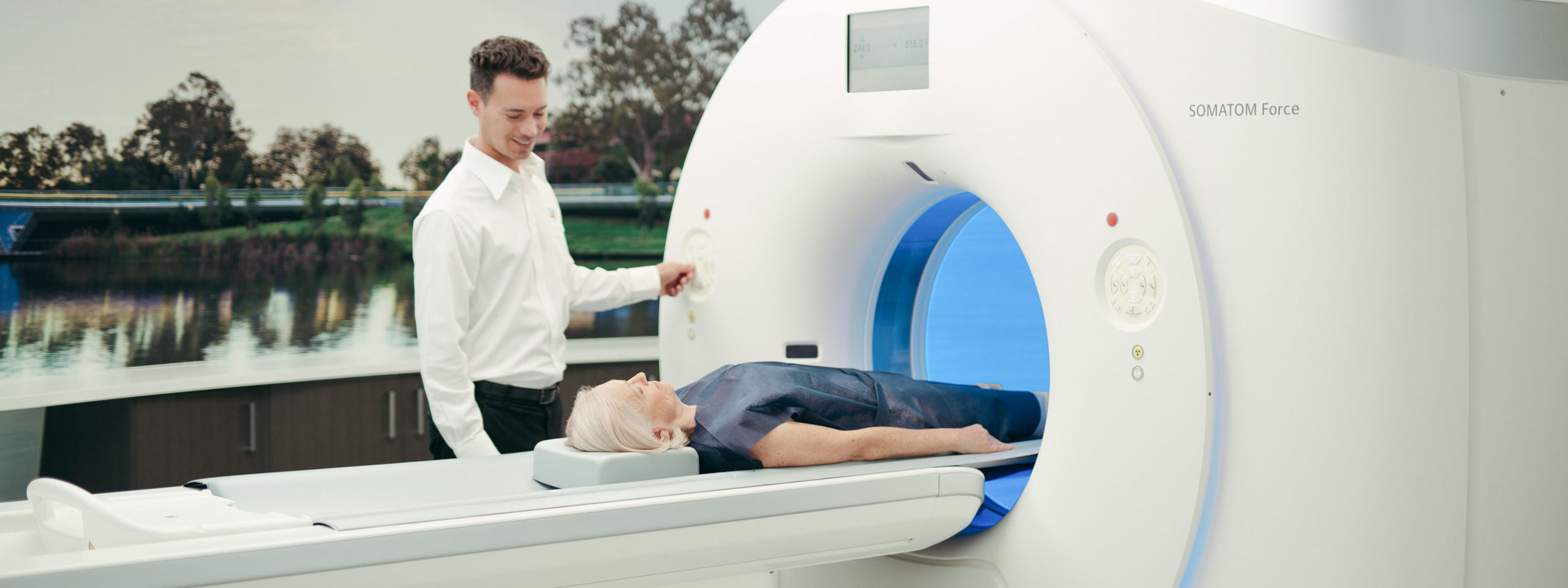These are injections into the small sliding (facet) joints of the spine. The injections aim to provide relief from your symptoms and will help to confirm that your symptoms arise from the facet joints.
Procedure
You will lie on the CT table on your front. Your skin will be cleaned with antiseptic where the needle and a local anaesthetic will be given. The radiologist inserts a very fine needle into the joint that your doctor has asked us to inject, using an aseptic technique (strict infection control techniques to minimise any risks of infections). You may be moved in and out of the CT machine as the needle is guided safely into the correct position. A small amount of x-ray contrast may be injected to confirm the needle position.
A long-lasting anaesthetic (e.g. Ropivacaine) and a long-acting steroid (e.g. Celestone) are usually injected together.
Before your Scan
Before the CT guided injection, you may be asked to change into an examination gown for your comfort, and to ensure clothing does not affect the images. You may also be asked to remove jewellery, eye-glasses and any metal objects that might interfere with the images.
You may eat and drink as normal before and after the procedure. If you are on any medication or have diabetes and are on insulin, take your usual medicines and diet.
Please inform us if you are on medication to thin your blood (e.g. Warfarin, Aspirin or Clopidogrel), have an iodine allergy, or are pregnant or breastfeeding.
It is important that you have someone to drive you home after the procedure.
Occasionally your doctor may request this procedure to be performed with sedation, in which case you will be required to fast, and a short stay hospital admission will be necessary. If this is the case, our staff will discuss this with you at the time of booking.
Risks / Side effects
Facet joint injections are generally very safe.
Side effects which may occur include:
- Increase in symptoms for up to 48 hours which will then settle.
- Increased blood sugar levels in diabetics.
- Local bruising.
- Insomnia, flushing and palpitations.
Infection is an uncommon, but serious side effect.
If x-ray contrast is administered there is a small risk of allergic reaction. This includes flushing, hives and difficulty breathing. Severe reactions are rare and life-threatening reaction extremely rare (1 in 170,000).
For more information, please refer to the IV Contrast page.
Other Information
You may experience some benefit from the local anaesthetic immediately following the injection, which will usually wear off after 2-3 hours. It can take several days for the steroid to begin to work and may take up to 2 weeks for it to have maximum effect.
The effect of the steroid can last for a week, several months, or years. Sometimes there is no pain relief from the injection. This suggests that the symptoms are not coming from the facet joint that was injected.
Avoid strenuous activity for at least 48 hours after the injection.
If required after the procedure, a simple analgesic such as paracetamol (Panadol) or anti-inflammatory should be sufficient. An ice-pack may also provide some relief.
It is important to note that infection is a potential and serious side effect. If you notice any fever or redness, swelling, or increased pain at the injection site after the first 2 days, notify your referring doctor or immediately call the clinic where the injection was performed.
Are you ready to make your CT (Computed Tomography) Scan appointment?
Our online booking platform allows you to quickly and easily make an appointment online.


